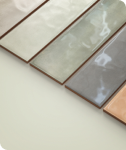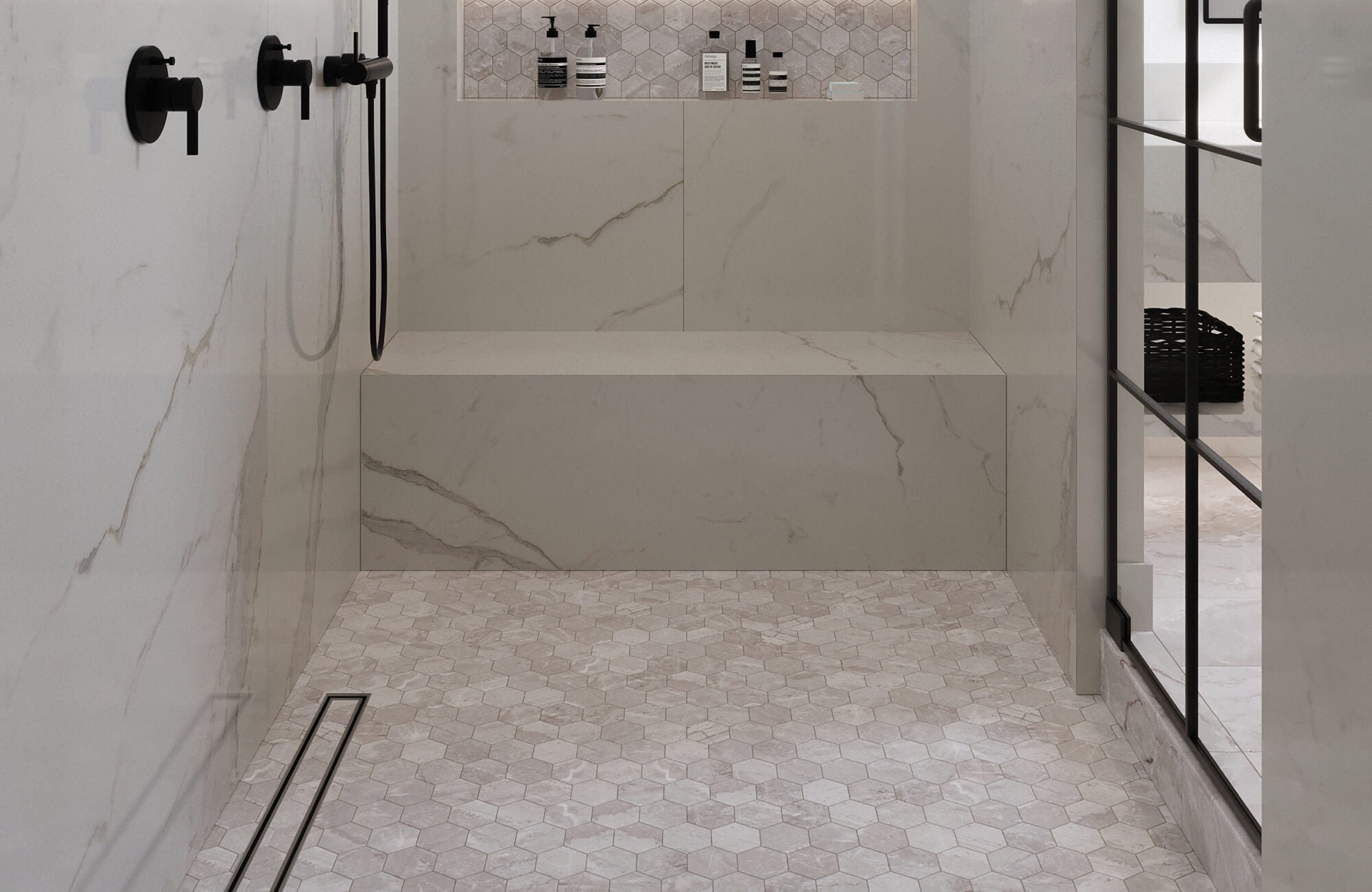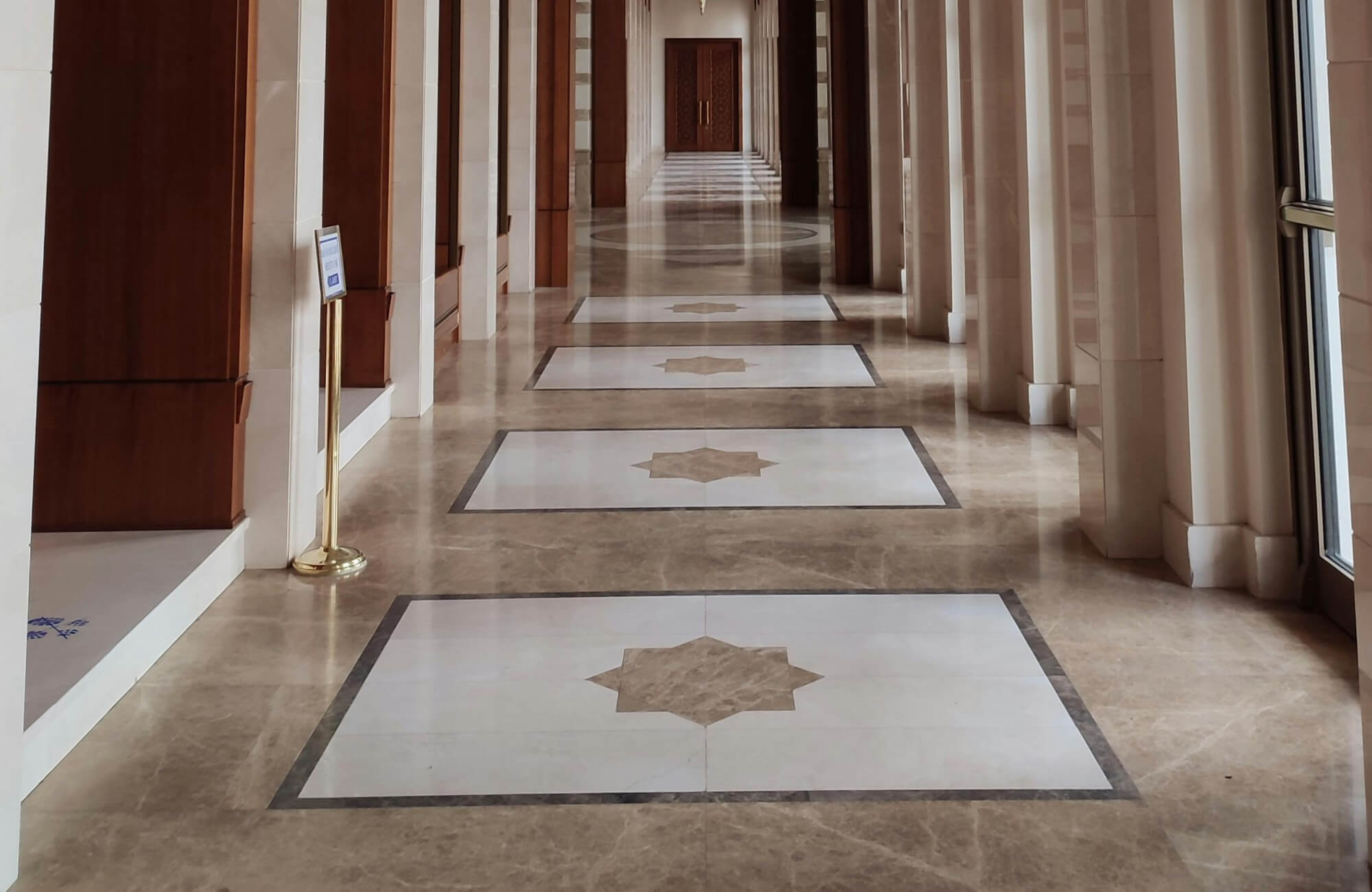Marble and granite are among the most popular natural stones in home design, valued for their timeless beauty and durability. While both materials enhance the aesthetics of any space, their unique properties affect how well they perform in different areas of the home.
In this article, we’ll break down the key differences in appearance, durability, and maintenance between marble and granite to help you choose the right option for your space. Plus, we’ll introduce marble look tiles as a stylish, low-maintenance alternative that offers the elegance of natural stone without the upkeep.

Physical Appearance
Marble and granite each offer distinct visual characteristics that enhance their appeal in home design. Marble is known for its smooth, polished surface, which reflects light beautifully and creates a sense of luxury and sophistication. Its cool, soft texture adds to its charm, making it a popular choice for elegant interiors. In contrast, granite features a textured, grainier finish that provides a more natural and grounded appearance, blending well with both modern and rustic styles.
When it comes to color and pattern, marble’s bold veining and diverse palette set it apart. Ranging from soft whites to deep greens and blues, the unique veining is created by mineral impurities such as iron oxide, graphite, and clay, giving each slab artistic flair. Granite, in comparison, offers a more uniform, speckled appearance shaped by mineral deposits like quartz, feldspar, and mica. This consistent pattern can vary from subtle neutrals to vibrant tones. The intricate flecks and grains in granite also add depth, making it a stylish option for enhancing home design.
Hardness and Durability
The hardness of granite and marble varies significantly, which affects their durability and ability to withstand daily wear. Granite ranks between 6 and 7 on the Mohs hardness scale, making it harder and more scratch-resistant than marble, which ranges from 3 to 5. As a result, granite stands up better to everyday wear, enduring contact with kitchen utensils or heavy pots, whereas marble is more prone to surface marks if not handled carefully.
To gauge scratch resistance at home, lightly drag a key or utensil across a sample piece–granite will typically remain unscathed, whereas marble may reveal subtle scratches. This simple test offers a practical way to understand how each material will perform in busy spaces. Granite’s resilience makes it an ideal choice for frequently used areas, while marble’s softer surface thrives in decorative or less active settings, where visual appeal is the priority.

Staining and Etching
Marble is especially susceptible to acidic substances, which can cause etching—a dulling or discoloration of the surface caused by chemical reactions. Everyday items such as lemon juice, vinegar, or wine can leave visible stains if not cleaned promptly. Furthermore, marble's porous nature makes it prone to staining from oils and pigmented liquids, which requires quick spill cleanup to avoid long-term damage. While this sensitivity adds to marble's distinct character, it necessitates greater caution when using it in moisture-prone areas or spaces frequently exposed to liquids.
In comparison, granite has a much higher resistance to etching and staining due to its dense composition. Its less porous surface can withstand acidic liquids without being damaged, making it a practical and long-lasting option for areas that receive frequent use. Although granite can stain over time if not sealed, it generally offers better protection against everyday spills.
Usage and Maintenance
Marble requires delicate care to avoid stains and etching. Regular sealing, typically every 3 to 6 months, protects the porous surface from absorbing liquids and oils, lowering the risk of long-term damage. You can also use mild, pH-neutral cleaners and soft cloths on a daily basis to keep the finish from scratching or dulling. Because of its sensitivity to wear, marble is best suited for decorative areas or low-use applications such as bathroom vanity tops, accent walls, or sculptures where the focus is more on design than durability.
Granite, on the other hand, offers a more forgiving maintenance process. Sealing is recommended once every 12 to 18 months to preserve its surface, though some dense granites may require even less frequent reapplications. Granite can also withstand stronger cleaners and heavier use, making it ideal for kitchen countertops, busy flooring areas, and covered outdoor spaces. Its durability and low-maintenance nature make it the preferred choice for functional, busy spaces that experience daily wear.

Cost Comparison
When comparing marble and granite, initial costs often reflect differences in availability and perceived luxury. Marble tends to be more expensive due to its refined appearance and the intricate quarrying process, making it a hallmark of upscale designs. In contrast, granite is usually more affordable, with prices varying based on color, pattern, and origin. This makes granite an attractive option for homeowners seeking the elegance of natural stone without exceeding their budget.
When it comes to long-term expenses, granite is also often the more cost-effective option. While marble's higher price can add sophistication to a room, it may necessitate additional investments in sealing and upkeep to maintain its appearance, as previously discussed. Ultimately, granite's lower initial cost, combined with easier maintenance, makes it a practical option for those seeking durability without high ongoing costs.
Marble Look Tiles as a Practical Alternative
Marble look tiles offer an elegant and cost-effective solution for achieving the luxurious aesthetic of natural stone without the drawbacks of high costs or demanding maintenance. Crafted from durable materials like porcelain and ceramic, these tiles mimic the intricate veining and rich textures of marble, providing the same upscale appearance at a fraction of the price. Unlike natural marble or granite, Edward Martin tiles require no sealing to maintain a polished, refined finish. This makes them an appealing option for homeowners seeking style and convenience.
When it comes to design flexibility, marble look tiles also perform better than natural stone. They come in a variety of colors, finishes, and patterns, allowing you to create seamless flooring, accent walls, or backsplashes that complement both contemporary and classic designs. Their ability to replicate marble's high-end appearance makes them an excellent choice for areas where moisture or frequent use could damage natural stone. This versatility makes it possible for homeowners to enjoy the luxurious look of marble in areas such as showers, patios, and kitchens without fear of wear or damage over time.
If you want to see how the right marble look tiles can transform your home space, use our augmented reality (AR) tool to view different colors and finishes in real time. It's a great way to test out different options and see how each tile choice affects your interior design before making a final decision.
Final Thoughts
Learning about the key differences between marble and granite is critical for making the right decision in your home design. Each material provides distinct advantages in terms of appearance, durability, and maintenance, which can have a significant impact on the overall success of your project. By carefully evaluating their properties, you can ensure that your chosen material meets both your aesthetic vision and practical requirements.
For those who love the look of marble but prefer a low-maintenance option, marble look tiles provide the perfect alternative. These tiles combine the timeless charm of natural stone with enhanced durability, making them a practical choice for busy households. If you have any questions or need personalized advice, feel free to contact us! Our team is here to guide you in selecting the best options for your flooring and wall design needs.










